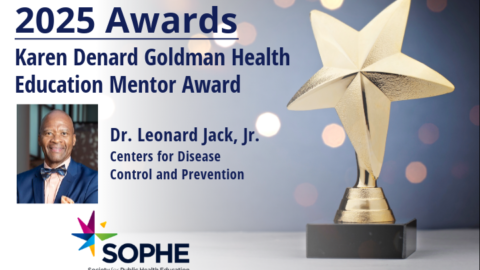We are living history. This is the pandemic of 2020, possibly 2021. Health educators are not in the intensive care units managing sick patients, but I believe there is a unique and very important role for us to play right now, taking a leadership role (even if behind the scenes) in coordination, guidance, and helping to translate findings to the general population.
I am a Peruvian-American social scientist working for the Tulane School of Public Health and Tropical Medicine based permanently in Peru.
Peru (~population of 30M) is a country in epidemiological transition: there are regions of this country where most people die of infectious diseases, such as in the regions of the Amazonian rainforest basin or the Andes mountains, and other regions where most people die of chronic diseases, such as the barren coastal capital city of Lima – which houses a third of the country’s population. Beyond the geographic, biological, and ecological diversity, our diversity is also represented in our people, cultures, and languages, and as in most countries, the socio-economic and health disparities. Some regions of the country are cosmopolitan cities where wealth from mining, fishing, textile, and tourism industries is evident, but where many also live on day-to-day earnings; other regions are isolated, remote, and lack access to basic necessities.
Five days after Peru’s first patient was diagnosed with COVID-19 and with only 10 diagnosed cases, on March 11th, the Peruvian President shut down all schools in the country. By March 15th, President Vizcarra announced that all borders would be shut as of midnight: the country was in lockdown, with an established curfew from 6 pm – 8 am where no one was allowed on the streets. This quick action first generated shock at how drastic the measures were, then concern about how individuals who live on a day-by-day income would handle this situation; at the same time, we felt pride that our leadership took immediate action, with knowledge that our health care system’s capacity is limited.
Questions about this disease, the measures being taken, and how to best protect oneself flooded social media and chat groups. “Flatten the curve” graphs were appearing on social media, as well as graphs explaining the benefits of isolation practices, but many people see graphs and… look away! And this is where I saw an important challenge for health educators: how do you communicate the importance of these graphs and models and measures in a simple way that anyone could understand?
I set out to explain, in Spanish and English, some of the graphs and information that were available in English, but not yet widely circulating in Spanish, on social media, in ways that a general population might understand. To my surprise, the first post went viral. I realized the major need for clear, easy to understand information. I continued to post messages in both languages, to explain different measures about what was known and what to expect.
In this interest of helping, I created a chat group with scientists and doctors to share data and discuss new information; themes requiring attention emerged. Mechanical ventilators were major needs: a virtual team was created with engineers, biophysicists, and doctors to work on prototypes. Personal protective equipment was going to run out: a virtual team came together composed of a textile engineer, doctors, and an engineer to test different textiles and materials with most protective properties. Letters were written to the national government to allow some textile companies – also in lock down – to open up for
production of necessary medical gear. Some of us started receiving calls for help – for information, materials, etc. — from colleagues in remote areas of Peru: a group of medical students translated relevant literature to Spanish for dissemination, others obtained donations for colleagues outside Lima. The interconnectedness of us all – in different fields, different settings – was, and is, clear.
It has been intense. Just to give a small example of the complex multilayered coordination required in a country in lockdown: after hearing of a shortage of medical masks for health professionals in the rainforest city of Iquitos (pop. ~450K), we coordinated a donation of 4000 masks to send. I then received a call from a regional health officer of Iquitos asking if, along with the masks, we could help transport 10 health professionals from Iquitos who were stranded in Lima.
Several days later, after trying to coordinate a military or humanitarian flight by calling a former minister of defense, local and national government officials, and drafting letters requesting assistance, the health professionals and materials arrived safely in Iquitos. Since then, we have collected ~$70,000 in funds from scientists, doctors, and students who have, at some point in their lives, been touched by Iquitos, as well as other generous individuals, and are using that to purchase necessary PPE and some medical supplies.
Unfortunately, 10 weeks after lockdown began, we are still dealing with similar complex logistics in evacuating very ill individuals, and purchasing and transporting supplies, to this remote city that is on the news for the devastation experienced by its people.
COVID-19 will affect all of us for some time, but each of us can play a positive role.
We must inform ourselves, reflect on how we can each apply our unique skills in our own unique settings, and take action.
Valerie A. Paz-Soldán, PhD, MPH
Read other blogs in this special HPP series



